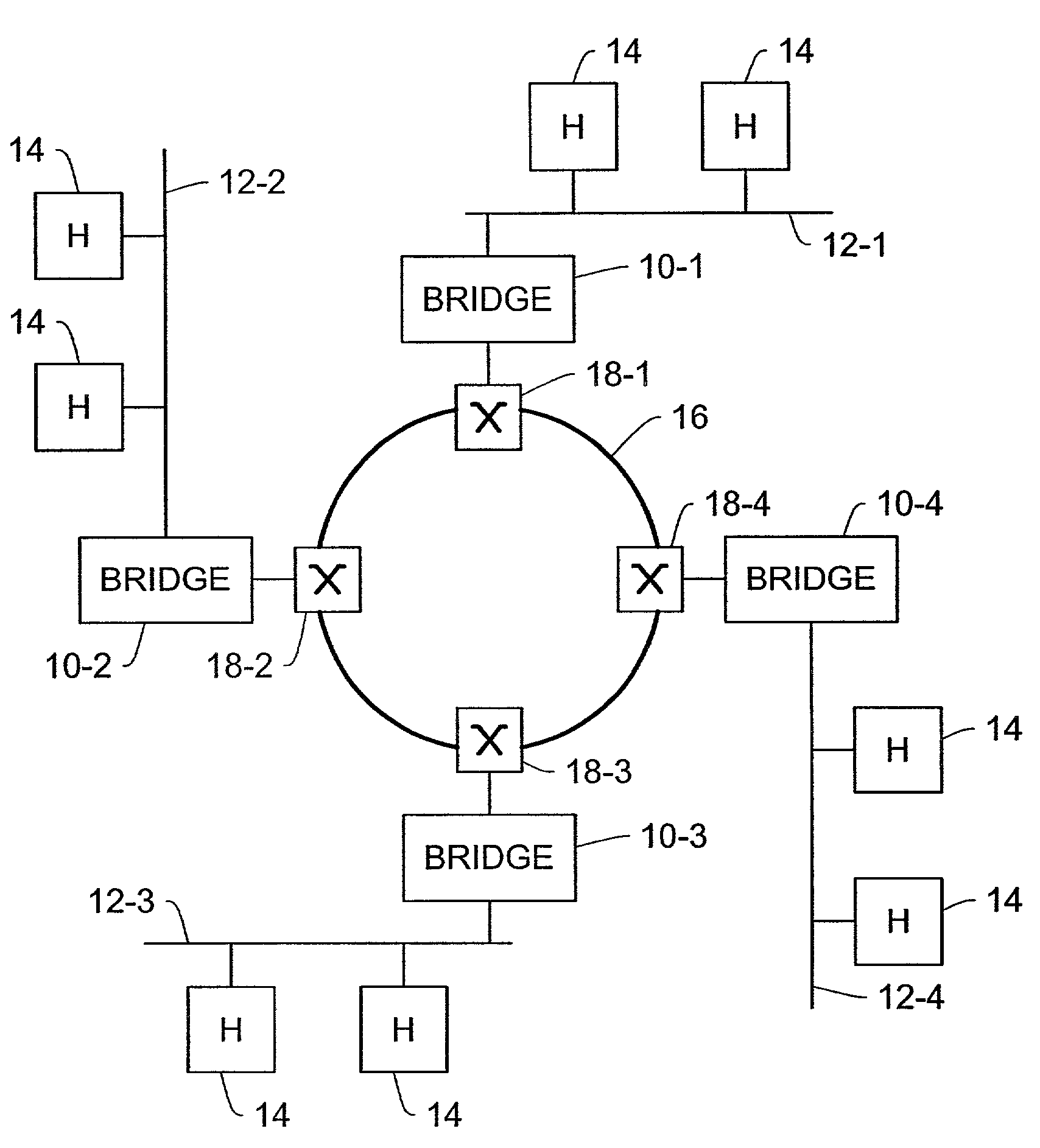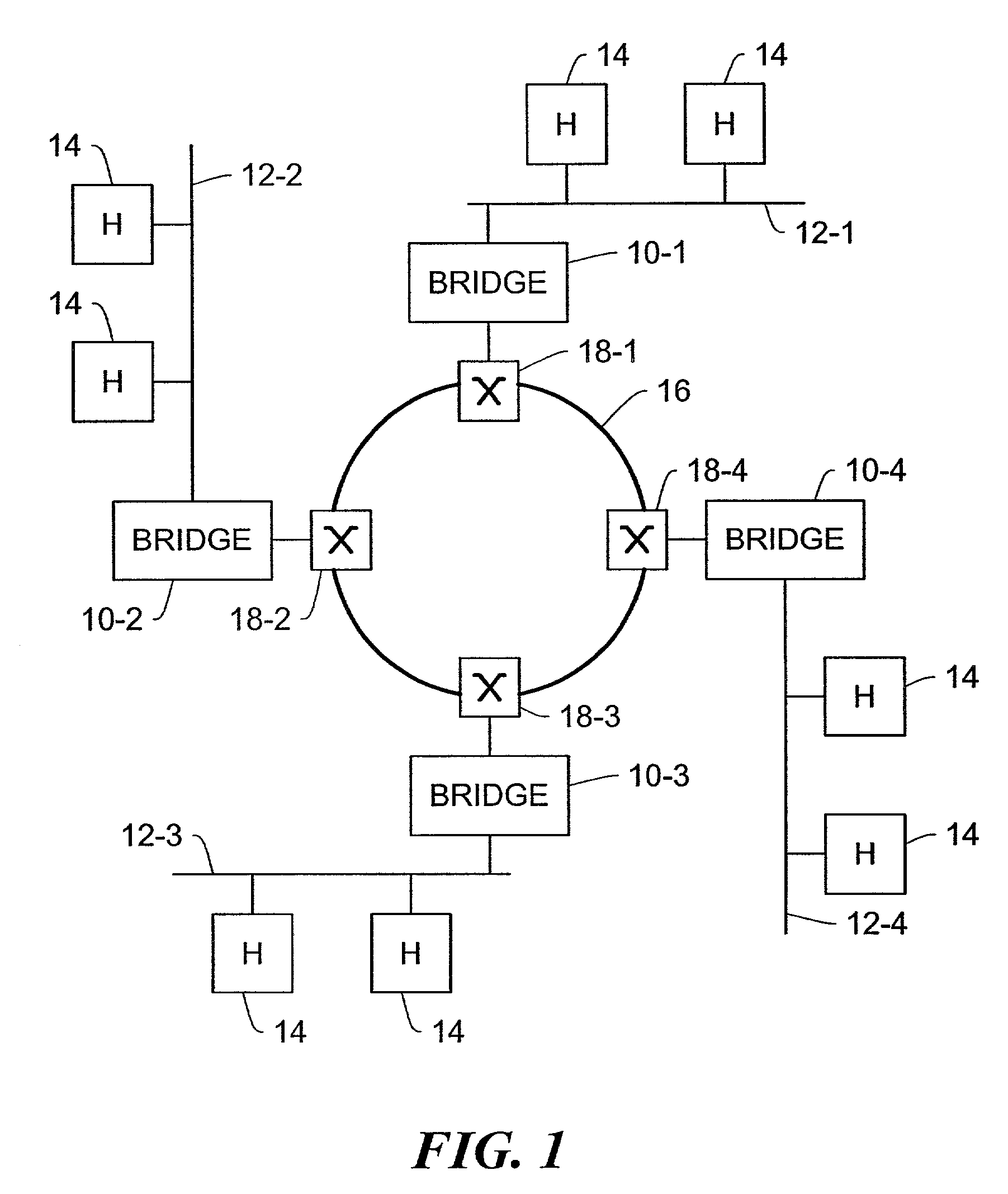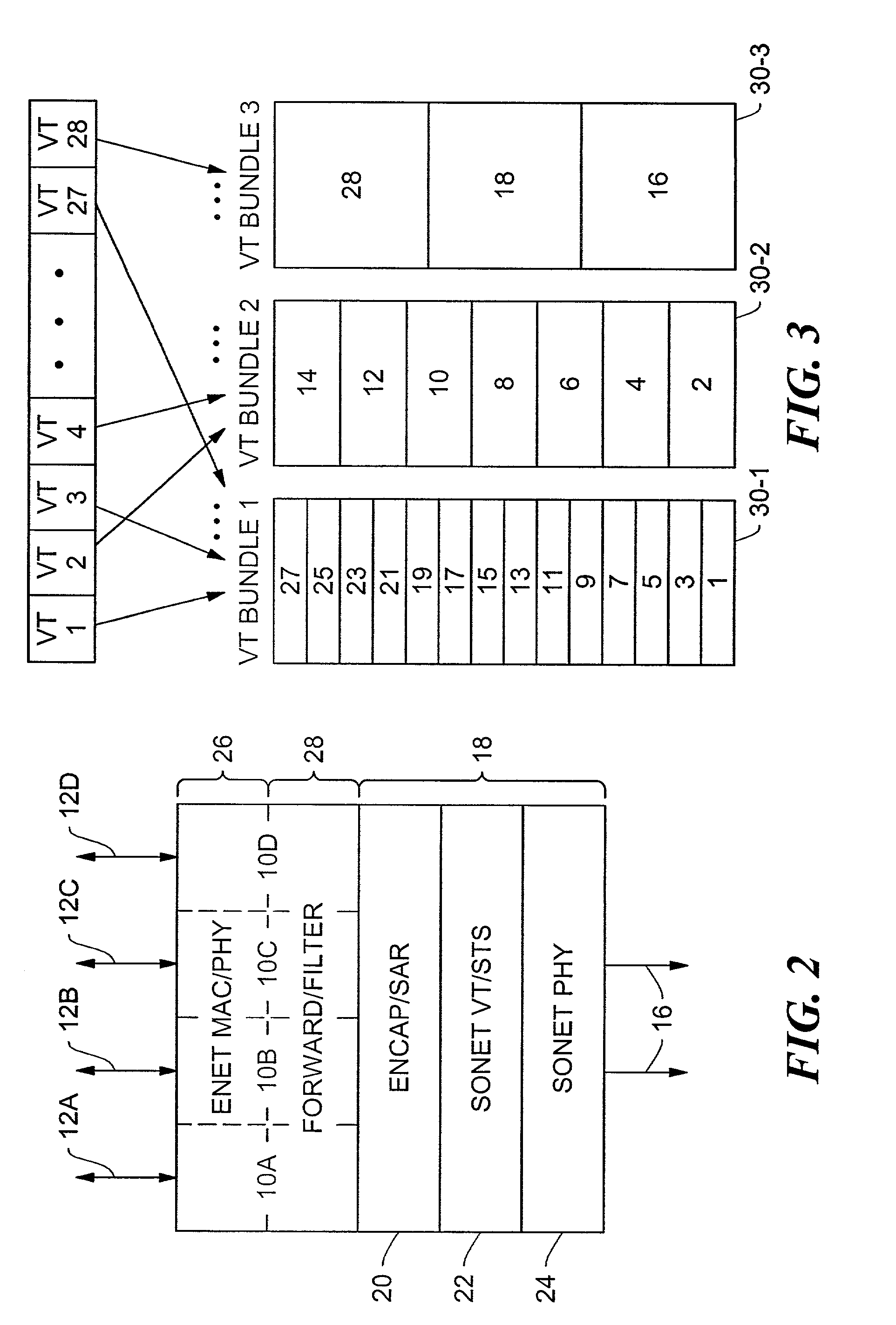Transmission of data frames using low-overhead encapsulation and multiple virtual tributaries in a synchronous optical network
a synchronous optical network and data frame technology, applied in the field of data communication, can solve the problems of inability to predict the expansion of the data rate, the general under-utilization of the link, and the inability to meet the demand of data frames, and achieve the effect of flexible and efficient use of transmission bandwidth
- Summary
- Abstract
- Description
- Claims
- Application Information
AI Technical Summary
Benefits of technology
Problems solved by technology
Method used
Image
Examples
Embodiment Construction
[0030]In FIG. 1, bridges 10-1 through 10-4 are connected to corresponding local area network (LAN) segments 12-1 through 12-4. Each LAN segment 12 has one or more host computers 14 or similar nodes connected to it. The bridges 10 are coupled to a Synchronous Optical Network (SONET) ring 16 via respective SONET termination and add-drop circuitry 18. The SONET ring 16 and add / drop circuitry 18 provide data frame transport services to the bridges 10 such that the set of LAN segments 12 collectively appear as a single LAN from the perspective of any of the hosts 14. That is, a host 14 communicates with another host 14 residing on a different LAN segment 12 in the same manner as if the other host 14 resided on the same LAN segment 12. The bridges 10 and add / drop circuitry 18 perform frame forwarding and filtering on behalf of the LAN segments 12 to achieve this logical joining of the LAN segments 12 into a single LAN.
[0031]The hosts 14 on each LAN segment 12 communicate using any of a va...
PUM
 Login to View More
Login to View More Abstract
Description
Claims
Application Information
 Login to View More
Login to View More - R&D
- Intellectual Property
- Life Sciences
- Materials
- Tech Scout
- Unparalleled Data Quality
- Higher Quality Content
- 60% Fewer Hallucinations
Browse by: Latest US Patents, China's latest patents, Technical Efficacy Thesaurus, Application Domain, Technology Topic, Popular Technical Reports.
© 2025 PatSnap. All rights reserved.Legal|Privacy policy|Modern Slavery Act Transparency Statement|Sitemap|About US| Contact US: help@patsnap.com



